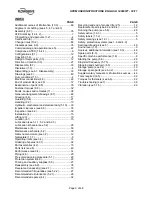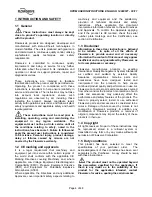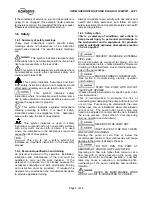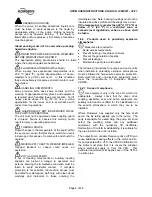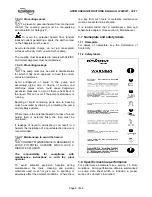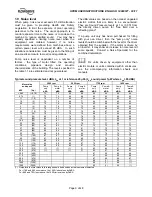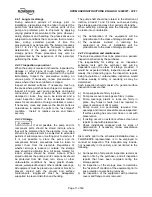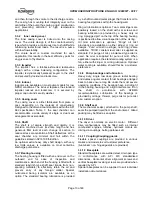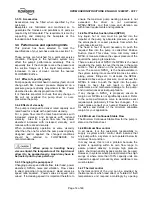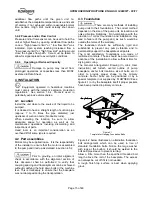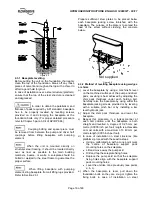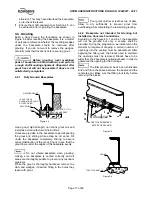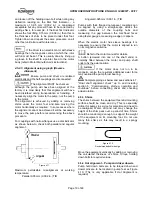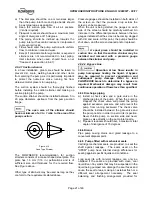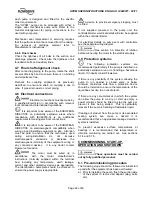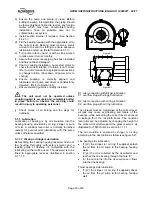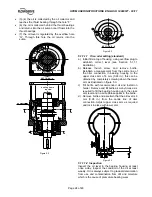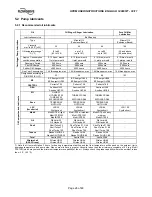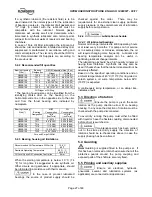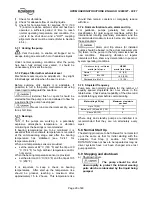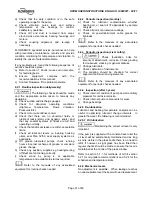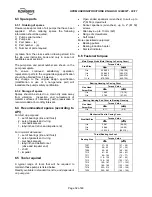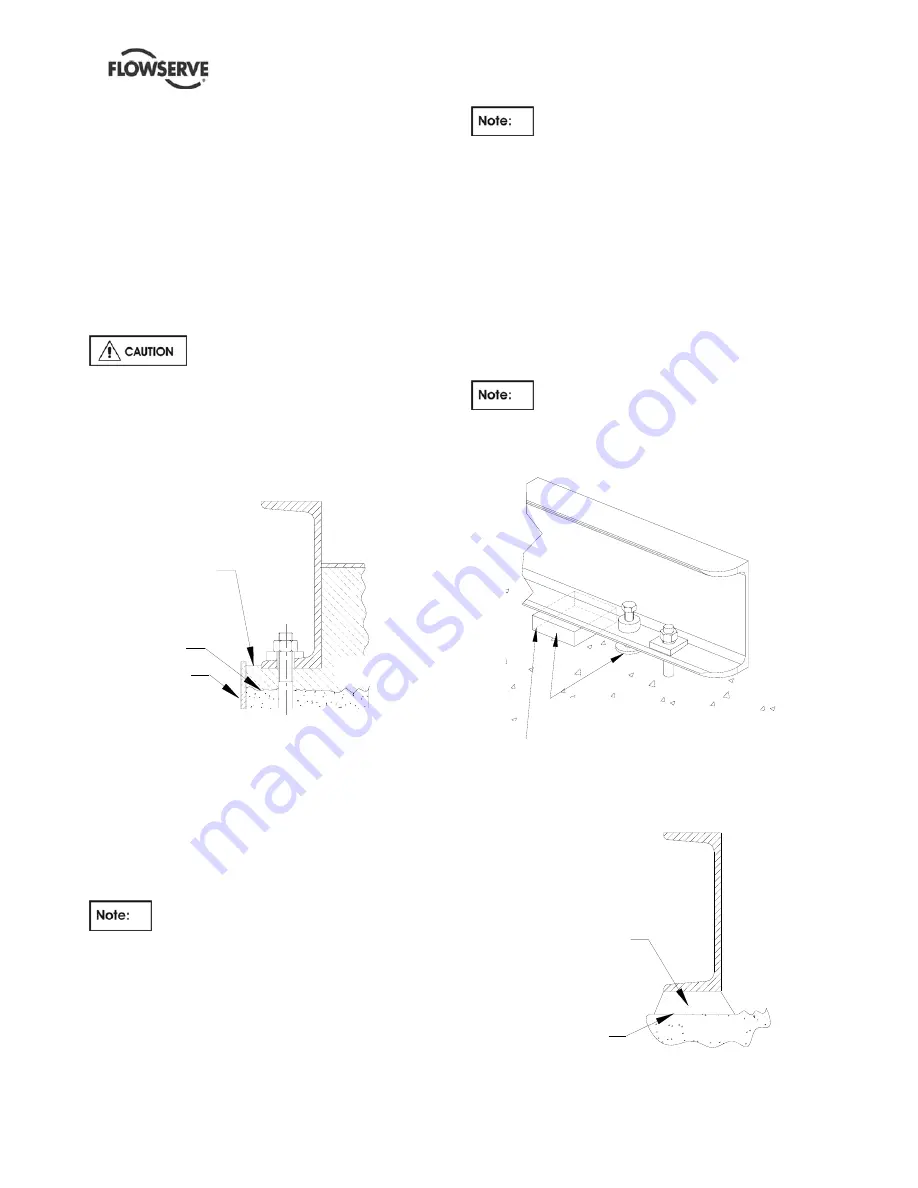
HPXM USER INSTRUCTIONS ENGLISH 14983571 - 03/11
Page 17 of 48
structure. This may have disturbed the baseplate,
so re-check the levels.
f) Ensure that shaft alignment per Section 4.5 can
be achieved prior to grouting the baseplate.
4.4 Grouting
Build a dam around the foundation as shown in
Figure 4.4 after levelling the baseplate. It is a matter
of personal preference whether the levelling wedges
under the baseplate should be removed after
grouting. If you do not want to remove the wedges,
carefully mark their locations before pouring grout.
Before grouting, level machined
pads of baseplate in both directions and perform
a rough shaft/coupling alignment. Alignment after
grout has set will not be possible if above is not
satisfactorily completed.
4.4.1 Fully Grouted Baseplates
DAM
CONCRETE
LEAVE TOP OF
FOUNDATION ROUGH
DO NOT FINISH
WITH TROWEL
FINISHED GROUT
GROUTING 1 TO 2
INCHES DEEP
Figure 4.4
Use a good, high strength, non shrink grout mix and
install as per manufacturer's instructions.
Holes are provided in the baseplate to permit pouring
the grout and stirring while acting as air vents. Fill
under the baseplate completely, stirring to assure
correct distribution of the grout. Check to see that the
grout flows under the edges of the baseplate evenly.
Do not vibrate baseplate when grouting,
making sure baseplate is vented correctly and all
areas are thoroughly puddle to prevent any resonant
problems.
When the grout is thoroughly hardened, remove the
dam and wedges, if desired, filling in the holes they
leave with grout.
Pour grout until level reaches top of dam.
Allow to dry sufficiently to prevent grout from
overflowing while completing the remaining grouting.
4.4.2 Baseplate not Intended for Grouting but
Installed on Concrete Foundations
According to the figure 4.3.1 and 4.4.1 the baseplate
will not be grouted but only a sealing shall be
provided. During the preparation, as indicated on the
General Arrangement drawing a certain number of
openings into the sealing must be guaranteed. After
applying the filler grout, the blocks used to maintain
the openings must be removed. Blocks have to be
wider than the baseplate longitudinal beam in order to
guarantee the opening for the drainage.
The filler grout must be of a non-shrinkable
kind and fill up the space between the beams and the
concrete poor. Make sure that filler grout is dry before
removing the blocks.
Not supplied
BLOCK TO BE REMOVED
AFTER THE SEALING
Figure 4.5
TOP OF FOUNDATION
PRIMARY
CONCRETE
SEALING
Figure 4.6

